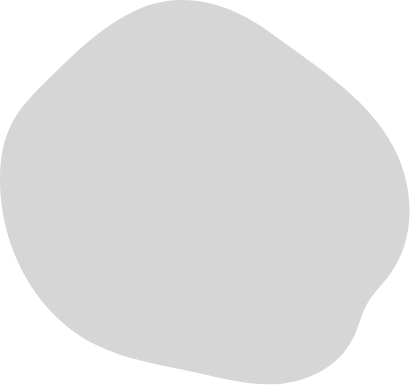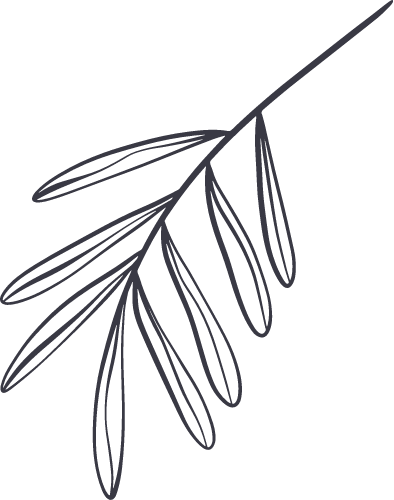Namaskaram!
Now I’m at Shornur. This is Mr Ambrose who lives very close to Nature. In order to run an establishment according to his ideas, he took ten acres of land on lease from a friend who thinks along the same lines. Even when we manufacture a farm product like jam, we have to compete with multinational companies. But here is Mr Ambrose who faces that challenge, manufactures good quality products, provides jobs for 20 persons, and gives them training as well. He also makes arrangements for people to come here directly and learn from him. If it is possible for you to come here, meet him personally, and understand the kind of work he does, it will prove helpful when you start a similar enterprise elsewhere. His website is www.farmersshare.in.
Can you tell us how you came to adopt this lifestyle?
I became aware about this concept when I was 22 years old. Thirty-two years back in Kerala, there was an organization named Gandhi Yuva Mandalam that aimed to propagate Gandhian values. I worked with that organization. I hail from Vypin where there was an organization named “Swaashraya Vypin” [Self-dependent Vypin]. It worked towards building a self- sufficient lifestyle by utilizing locally available resources. From these experiences, I internalized certain values, and live accordingly.
I worked in the field of organic farming at Kanthalloor in Munnar, with a hotel named Grasshopper in Ernakulam, all in order to gather experience in the fields of healthcare, food manufacture, farming, labour, and so on.
A person involved in organic farming needs to have a specific stand on environment. Taking a stand on environment means adopting a comprehensive view on labour, clothes, food, its craft and so on. That is the concept that Farmer’s Share puts forward.
I came here five years back. This area of five acres belongs to Basheer Mash and his relatives. They have leased it out to me for 20 years. They share my views and therefore co- operate with me.
What is the nature of the enterprise you have begun here?
It is our responsibility to produce resources locally. The people of Kerala have a high level of dependency, in the manufacture of clothes, food, etc. We have become spokespersons for consumption, not production. Possession of wealth need not necessarily guarantee satisfaction. Nor can it ensure any protection. Such an awareness came about during the time of COVID. There arose a fear that we might not be able to procure commodities.
There is a belief that even without production, if we are willing to spend money we will get food from some place or another. These styles of production will change. The object that is most in demand is food. Corporate companies will enter that field, and there will come a time in the future when the farming sector becomes a slave to them.
Our society should have the discretion to realize that the right to decide the price of a product belongs to the producers, that is, the farmers. When the price of everything in this world, except farm produce, is decided by the manufacturers themselves, the farmers are left out because it is the market that decides it. Our first responsibility lies in conceding the right of farmers to decide the price of their products. Rather than waste our resources through over-spending, we, the government and the society, should create opportunities for farmers to process their produce, and covert at least 50 % of what they create into value- added products. Farmers do not know that they can convert what they create into different products. For instance, take the case of banana inflorescence. At most, the farmer gets Rs 3 or Rs 5 on selling one inflorescence. He does not know that it can be converted into 35 bottles of pickles. He does not know how to convert it or how to market it. The banana pith can also be converted into an edible product, like a snack, or pickles, or juice. The corm [the thick bulbous part from which roots grow] can be used to make pickles. Thus in Kerala we have a lot of raw food material that goes waste. Another example is the hibiscus flower. It is an excellent alternative for tea leaf or tea dust. In fact, the hibiscus beverage tastes exactly like tea.
The most significant product here is hibiscus, isn’t it? How many plants do you have?
Nearly 500. We get 700-800 flowers every day.
The problem with us humans is that we do not know how to do designing where it is necessary. Plants have their own pattern of growth, and left to grow on their own, they can protect themselves. When we feed them, they become dependent on us. As a result, a lot ofeffort goes into raising them. That is the biggest mistake made by farmers. If we choose well, we can create a lot of things without a lot of effort. The hibiscus is an excellent example of that.
Hibiscus tea is an excellent beverage. The flowers are sprayed with lemon juice and dried, then mixed with holy basil at the ratio of 75:25, blended, powdered and packeted.
This is completely organic, isn’t it?
Hibiscus petals are immersed in honey and the container closed for 60 days. The essence of the flower will seep into the honey. The honey is then sold. Besides, we make hibiscus sherbet. That is done by mixing hibiscus flowers, sugar candy and lemon juice, and allowing it to ferment, by storing the mixture in a wooden barrel for 40 days, and later filtering it. The sherbet is very tasty. We also make hibiscus jam by mixing the flowers with ash gourd.
The ash gourd is also cultivated here, isn’t it?
Yes. So, we have four products. Besides, we are involved in weaving. One of the colours of the dyes we use comes from hibiscus. Thus, we have five products. More can be made. We add hibiscus leaves to make soap, hibiscus petals to medicate oil, and so on.
How many people work here?
There are twenty of us.
What we have used in order to make these structures are waste materials. The panelling has been done using discarded pieces of finger board that goes into making guitars. A friend of mine runs a guitar factory. So I get this material from him. The other material we use is mud and pieces of rock that we get while preparing the fields for farming. I am basically a mason.
Actually speaking, only two acres have been used so far. The rest of the land is left intact, with a forest growing naturally in it. Beyond that point, you’ll see trees like the jack, the mango and so on, that were planted by Basheer mash. We don’t interfere with Nature unnecessarily. We don’t clear the area. These were designed without hurting the soil too much. This pond was already here when I came to this place. I merely got it cleaned. The construction was done by us.
What kind of gooseberry-based products do you make?
We have three products – then nellikka [gooseberry dipped in honey], nellikka arishtam [medicated gooseberry syrup], nellikka lehyam [medicated gooseberry jam]. If you add gooseberry pickles to the list, that will make it four.We make them when gooseberries are available during the fruiting season. Or, I source them from my friends’ farms.
Starfruits can be converted into good products. They come in two varieties – one that is sweet and the other that is not. We will know the difference only after the fruit appears. The sweet one can be made into jam. Jams have two textures. One is made from pulp, and the other, without it. We use palmyra sugar for sweetening. Sometimes, jaggery.
Doesn’t jaggery have a few disadvantages?
Yes, its sweetness is heavy. So it can completely mask the light flavour of the starfruit. That is where you should apply your common sense. We should ensure that the taste of the fruit we choose (to make the product) remains intact. In other words, a person with a refined palate should take decisions, regarding which sweetening agent to use and how much. Do you tell all this to the farmers?
Of course! I’ll reveal this to anyone who is interested. There is no secrecy at all. This is all part of education. Farmers ought to change over to this style.
On coming here, I felt this place had the right kind ambience for an educational or cultural workshop.
We do hold workshops here, in association with the Krishi Bhavan (Office of Agriculture). We also have workshops on manufacturing food without any adulteration.
We cannot control other people’s tastes. What one should eat and should not is a matter of personal choice.
This is a combination of healthy and tasty food.
What kind of pottery do you do here?
Utility products, that is, cooking and serving vessels that are used in kitchens.
What about weaving?
We have five looms, and weave mostly all types of cloth except mundu [dhoti] and sari. We either weave the cloth and then dye it, or dye the threads and then weave the cloth. The colours we use are extracted from flowers, leaves and roots.
A lot of good work is being done in the area of food. The first enterprise in Kerala was started in Kozhikode, 22-23 years back. It was called ‘Elements,’ and was led by Tony Mathew. They have farmers’ collective in five districts, and bring their produce here at Shornur. We convert them into value-added products and give them back to the farmers.
African bird’s eye chilly, tamarind, Indian hog plum, jack fruit, mango and other fruits, are brought here during the season. We prepare the product and return them to the farmers. That is, you process whatever raw material you get in whatever quantity. I desire to see enterprises like Farmer’s Share come up at 100 places in Kerala.
It is not common for people to take property on lease and do such things.
I am a kind of person who likes to exist harmoniously with fellow-humans. I like to feed the people I like with the food I like. That is my fundamental nature. When I give you some product I have made, I give it with a full heart. I love the product I make, the food I make. That is the motto behind my work.
It requires exceptional courage to take so much land on lease, and develop it to such an extent, within a span of five years, as to give employment to 20 individuals. What I see mostly are people who invest a lot in buildings. But here, that has been given the least priority. What we see here is far more beautiful than what is created after investing crores of rupees. I see very good toilets, and they are managed well too.
These are toilets without walls! What you see are wall-like structures, made by sticking two tiles together. It is hygienic, and provides privacy too.
To many people, this is a model indeed. What most people ask is what they can do in this direction.
Yes, youngsters or expatriates or whoever is interested, should take up projects that are viable. Whatever enterprises we float, we should ensure they do not harm the earth, and that they do not have a centralized power structure. Such enterprises will be easy to run. Production has to be decentralized. Only through that can we increase the involvement of human labour. But the production system is always a centralized one.
What people worry over these days is that if we think on such lines, the enterprise will collapse. But that is not what we see here.
With the use of more and more technology, human intervention is being stopped. The new world should not allow the avoidance of human labour. More and more people should be involved in meeting our needs. If human involvement is minimized, most people will fall into poverty, and a small segment of the rich will grow wealthier. That is injustice. That is how I see the issue.
Whatever you know, you share it with others. It has been a pleasure meeting you.
Here a lot of activities are taking place – weaving, pottery, food manufacture – all executed in an organic manner. One of the specialties of this place is that there has been no heavy investment on buildings. Whatever structures are put up here have been done tastefully, by recycling waste products, and we can see the application of the mind and the aesthetics of one person in all of them. If you make a personal visit, you will be able to see it for yourself. Many workshops can be conducted here – educational, cultural and so on. Please get in touch with him directly. The website is www.farmersshare.in . If you step in, you’ll get more information about it.



